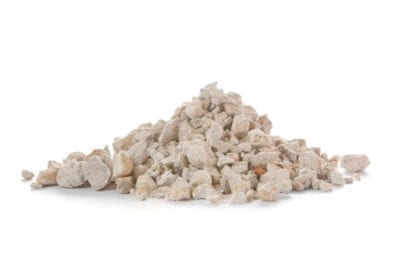
The perfect potting soil varies depending on its use. Each
type of potting soil is specifically formulated with different ingredients
whether the need is for better aerated soil or water retention. Pumice is one
such ingredient used as a soil amendment. What is pumice and what does using
pumice in soil do for plants? Read on to find out about growing plants in
pumice.
What is Pumice?
Pumice is fascinating stuff, borne out of the superheated
earth. It is basically whipped volcanic glass that is made up of tiny air
bubbles. This means that pumice is a lightweight volcanic
rock that makes it perfect for use as a soil
amendment.
The airy rock is ideal for use with cacti
and succulents as well as other plants that require excellent
drainage and air circulation. Plus, the porosity of pumice allows microbial
life to thrive while maintaining soil structure better than perlite. Planting
with pumice also has the advantage of a neutral pH along with a variety of
trace materials.
There are many advantages to growing plants in pumice. It
reduces water runoff and fertilization by increasing soil absorption in sandy
soils. It also absorbs excess moisture so roots don’t rot. Additionally, pumice
improves aeration and stimulates the growth of mycorrhizae.
Pumice doesn’t decompose or compact over time like other
soil amendments, which means it helps to maintain soil structure. It also keeps
clay soils loose over time for continued soil health. Pumice is a natural,
unprocessed organic product that doesn’t decompose or blow away.
Using Pumice as a Soil Amendment
To improve drainage for plants such as succulents, mix 25%
pumice with 25% garden soil, 25% compost and 25% large grain sand. For plants
that are prone to rotting, like some euphorbias,
amend the soil with 50% pumice or in lieu of amending the soil, fill the
planting hole with pumice so the roots are surrounded by it.
Pumice can be used as a topdressing to absorb rainwater that
puddles around plants. Create a moat around the plant with vertical tunnels.
The moat should be at least a foot (30 cm.) away from the base of the plant.
Funnel pumice into the vertical holes.
For potted
succulents, combine equal portions of pumice to potting soil. For
cacti and euphorbia, combine 60% pumice with 40% potting soil. Start cuttings
that rot easily in pure pumice.
Pumice can be used in other ways as well. A layer of pumice
will absorb spilled oil, grease, and other toxic liquids. Once the fluid has
been absorbed, sweep it up and dispose of it in an eco-friendly manner.
